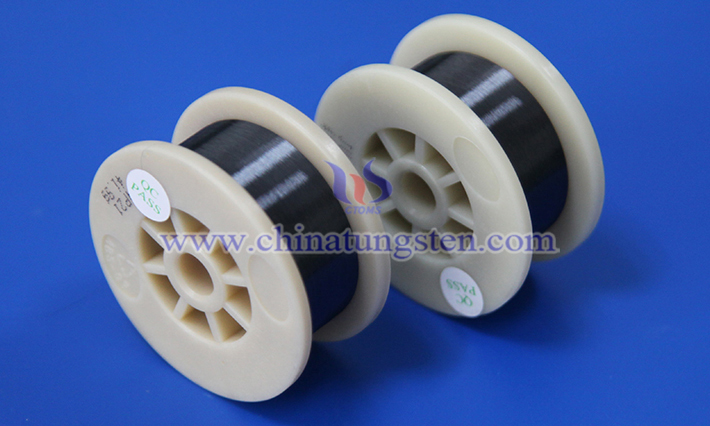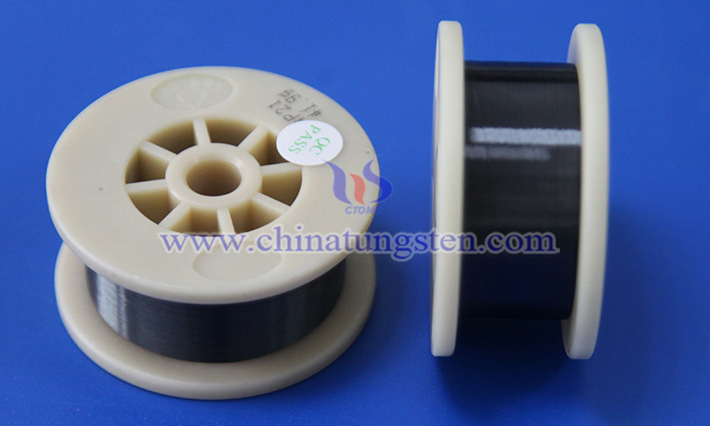The Role of High Temperature Resistant Tungsten Wire in Glass Forming
- Details
- Category: Tungsten Information
- Published on Friday, 27 June 2025 17:08
High temperature resistant tungsten wire plays a vital role in the glass forming process. Its unique performance is closely combined with process requirements, which significantly improves the quality and production efficiency of glass products.

I. Characteristics of High Temperature Resistant Tungsten Wire
1. Extreme High Temperature Tolerance
Tungsten has a melting point of up to 3410°C, making it one of the metals with the highest melting point in nature. This feature enables it to maintain structural stability during glass melting (1500-1750°C) and forming processes, avoiding melting or deformation and ensuring process continuity.
2. Accurate Thermal Control Capability
Tungsten wire heats up quickly and has uniform temperature distribution, and local precise temperature control can be achieved through current regulation. For example, during glass tube drawing or blowing, tungsten wire can maintain the temperature gradient in the softening zone of the glass for easy shaping.
3. Chemical Stability and Low Thermal Expansion
Tungsten wire has high chemical stability, and its thermal expansion coefficient (4.5×10⁻⁶/°C) is close to that of glass, which reduces stress cracks caused by thermal expansion and contraction and reduces product defect rate.
4. Ultrafine Processing Potential
Through wire drawing technology, the diameter of tungsten wire can be as low as micron level, which is suitable for high-precision cutting of optical glass, display glass, etc., and the edge smoothness can reach nanometer level.

II. The Role of Tungsten Wire in Glass Forming
1. Glass Melting Stage
As an electric heating element, tungsten wire is embedded in the furnace to provide continuous high temperature (>1600°C) to ensure that raw materials such as silica sand and alkali metal oxides are fully melted and evenly mixed. Compared with traditional fuel heating, the heating efficiency of tungsten wire is increased by more than 30%, and there is no pollution from combustion by-products, which is suitable to produce high-purity optical glass.
2. Forming and Shaping Process
Local heating: During the process of drawing, blowing or pressing, the tungsten wire heats the glass in a point or line shape, controls the softening area, and realizes the precise forming of complex shapes (such as special-shaped bottles and optical fiber preforms).
3. Functional Glass Manufacturing
Embedded heating: The tungsten wire is embedded in laminated glass or smart glass, and generates heat after power is turned on to achieve functions such as defrosting (car rear windshield) and dimming (electrochromic glass).
4. Precision Machining and Cutting
Wire cutting technology: Ultra-fine tungsten wire combined with high-frequency vibration is used to cut glass sheets. The cut is flat and accurate, and is widely used in the manufacture of mobile phone screens and biochip substrates.
III. Technical Advantages and Industry Value
1. Improved Production Efficiency
Tungsten wire heating has a fast response speed, shortens the glass melting and molding cycle, and increases production capacity.
2. Energy Consumption and Cost Optimization
Tungsten wire has high electrothermal conversion efficiency and long life, reduces replacement frequency, and reduces maintenance costs.
3. Product Quality Upgrade
Precise temperature control and low thermal stress characteristics significantly improve the flatness and light transmittance of glass products.
- Chinatungsten Online: www.tungsten.com.cn
- CTIA GROUP LTD: en.ctia.group
- Tungsten News & Price: www.ctia.com.cn
- Molybdenum News & Price: news.molybdenum.com.cn
- Tel.: 86 592 5129696; Email: sales@chinatungsten.com



 sales@chinatungsten.com
sales@chinatungsten.com